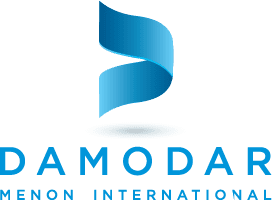‘Mélange’ is a French word meaning ‘medley’ or ‘mixture’. Fabric manufacturers in India create Mélange fabric by blending different fibers to form different multi-tonal effects and patterns, such as streaks and spots in different colors. Mélange yarns are often created using a combination of greige and dyed fibers, like wool, cotton, silk, and synthetic, to achieve unique fabrics with distinctive textures and colors. The percentage of the fibers may vary depending upon the requirement of fabric companies in India. The fibers can be 100% cotton, as well as a blend of several fibers.
Mélange yarns have heat thread and speckled appearances with small fragments of different colors throughout.
Textile companies in India use Mélange yarn to create various effects in woven and knitted fabrics, like subtle tones, contrasting color combinations, rustic looks, and bold variations. Sweaters, hats, scarves, outdoor wear, and sportswear are popular byproducts of Mélange fabrics.
Ring Mélange Yarn
You can also produce Ring Mélange Yarn in the traditional ring spinning method by feeding different colors of fibers into the spinning machine. The machine twists and rotates the fibers to create a continuous strand of multi-colored yarn.
Ring Mélange is recognized for its high-quality, durable, strong, and uniformly thick yarn.
Fabric Companies in India often use Ring Mélange Yarn to create strong and durable garments for outdoor, sports, work, and activewear.
Important Benefits of Mélange Yarn
- It is eco-friendly since the fibers are dyed before spinning, saving around 50% of water consumption compared to conventional processing.
- Lesser processing saves more energy, reduces carbon footprint, and protects the environment.
- It is versatile, attractive, and unique in appearance.
- It produces a wavy effect, making them the first choice for fashion enthusiasts and designers.
- It creates soft and shiny fabrics with a glossy sheen.
Classification of Mélange Yarns
Mélange yarn is classified into different sections based on various factors like spinning method, color effect, end-user, and fiber composition. But these classifications mainly fall under two basic categories: blended and non-blended mélange yarns.
Blended Mélange Yarns
Blended mélange yarns are manufactured with different fibers in a fixed ratio. For instance, Cotton and polyester blend contains 50% polyester and 50% cotton; Cotton Viscose is 60:40, while Polyester Viscose will be 80:20.
However, Blended Mélange Yarns are generally made with Cotton and Viscose, with the cotton portion having a lighter shade and viscose, a darker one.
Non-Blended Mélange Yarns
Non-Blended Mélange yarns are produced by blending the same type of fiber with different colored threads. Example: 100% rayon-dyed viscose.
Fiber Composition: Depending upon the fiber blend, the final mélange yarn can exude different properties, like soft, lightweight, breathable, warm, or moisture control.
Tonal Effect: The yarn can be classified based on the different colors it creates, such as pronounced color or a subtle shade.
End-User’s Demand: The top textile companies in India’s intention play a crucial role here. For instance, Mélange yarn can be specifically created for warmer clothes. And there are also Mélange yarns designed for rugs, curtains, and bed linen.
Spinning Method: There are different ways to produce Mélange yarn, including the ring-spinning method, open-end spinning, and air-jet spinning. Each method produces yarns with different textures, performance, strength, and uniformity.
Overall, the classification of Mélange yarns will depend upon the fabric companies in India and the intended use.
Grey Mélange Yarn and Ecru Mélange Yarn
Grey and Ecru are two different and popular Mélange yarns for creating fashion and household textiles. However, viscose and cotton suppliers often misinterpret both because of their subtle differences. The composition of Cotton and Grey mélange is almost the same.
Grey Mélange (Cotton 90%: Viscose 10%): The yarn is produced by blending shades of grey cotton and viscose fibers, such as black and grey cotton and white viscose. This yarn is popular for its neutral and understated look.
Ecru Mélange (Cotton98%: Viscose 2%): The base color of Ecru mélange is white or pale beige. This yarn type is created by blending different shades of cream, white, and beige cotton fibers and viscose. It gives out a natural and organic look.
Besides these two basic types, there are two more Mélange yarns: Light Grey (95% Cotton + 5% Viscose) and Dark Grey (80% Cotton + 20% Viscose). The percentage of Viscose varies in each type. If we increase the cotton percentage, the product will be lighter.
The more viscose in the yarn, the pricier it is. Fabrics knitted with grey mélange yarns don’t need to be dyed, reducing the cost of fabric manufacturers in India a little more.
Are you looking to sell cotton fabric online in India? Have you tried registering on TEXchange, the world’s number one textile trading platform for grey yarn, fiber, and fabric, including Mélange?
